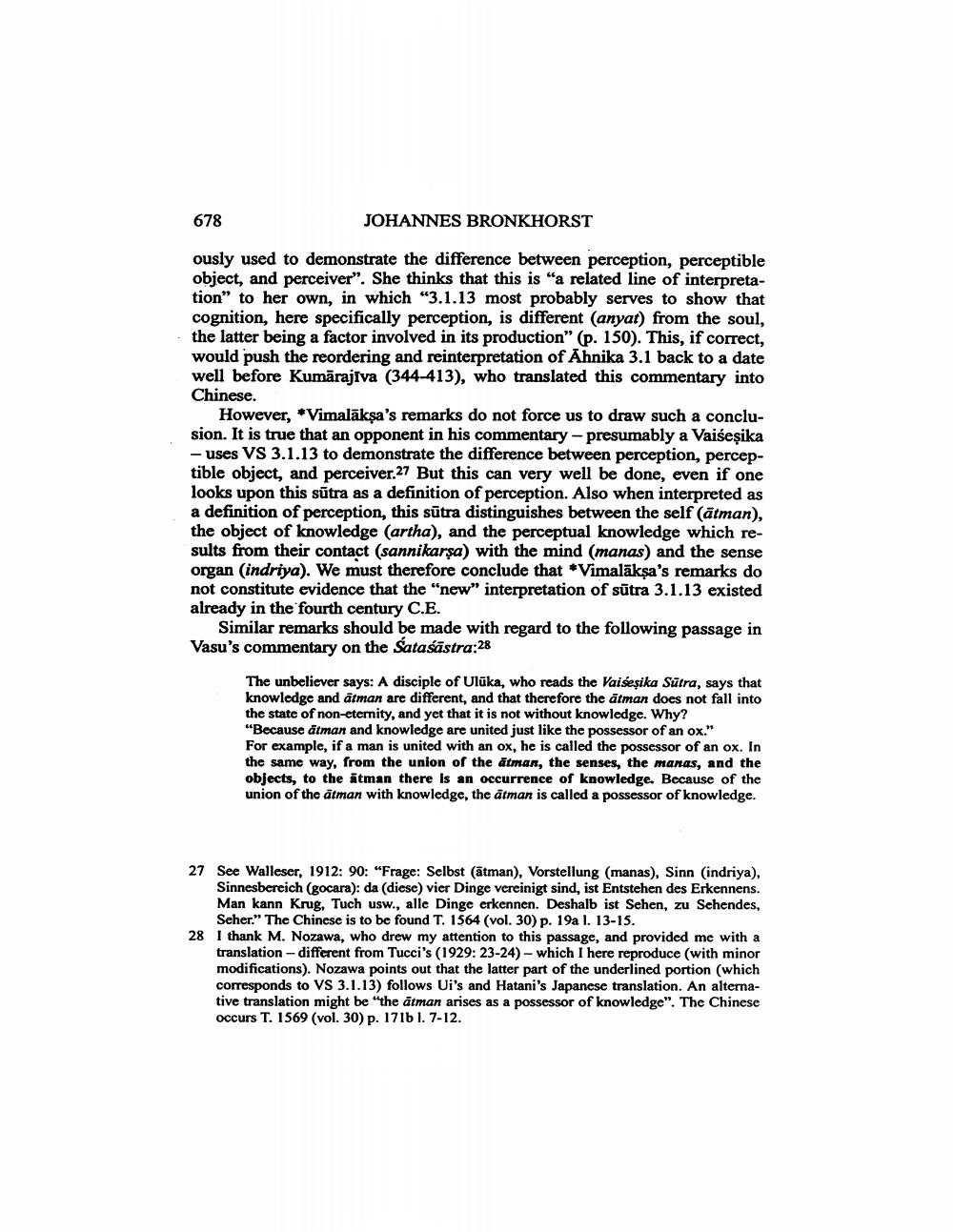________________
678
JOHANNES BRONKHORST
ously used to demonstrate the difference between perception, perceptible object, and perceiver". She thinks that this is "a related line of interpretation" to her own, in which "3.1.13 most probably serves to show that cognition, here specifically perception, is different (anyar) from the soul, the latter being a factor involved in its production" (p. 150). This, if correct, would push the reordering and reinterpretation of Ahnika 3.1 back to a date well before Kumārajiva (344-413), who translated this commentary into Chinese.
However, *Vimalākşa's remarks do not force us to draw such a conclusion. It is true that an opponent in his commentary - presumably a Vaiśeşika - uses VS 3.1.13 to demonstrate the difference between perception, perceptible object, and perceiver.27 But this can very well be done, even if one looks upon this sūtra as a definition of perception. Also when interpreted as a definition of perception, this sūtra distinguishes between the self (ātman), the object of knowledge (artha), and the perceptual knowledge which results from their contact (sannikarşa) with the mind (manas) and the sense organ (indriya). We must therefore conclude that *Vimalākşa's remarks do not constitute evidence that the "new" interpretation of sūtra 3.1.13 existed already in the fourth century C.E.
Similar remarks should be made with regard to the following passage in Vasu's commentary on the Sataśāstra:28
The unbeliever says: A disciple of Ulūka, who reads the Vaiseșika Sutra, says that knowledge and atman are different, and that therefore the atman does not fall into the state of non-eternity, and yet that it is not without knowledge. Why? "Because atman and knowledge are united just like the possessor of an ox." For example, if a man is united with an ox, he is called the possessor of an ox. In the same way, from the union of the atman, the senses, the manas, and the objects, to the atman there is an occurrence of knowledge. Because of the union of the atman with knowledge, the ātman is called a possessor of knowledge.
27 See Walleser, 1912: 90: "Frage: Selbst (ātman), Vorstellung (manas), Sinn (indriya),
Sinnesbereich (gocara): da (diese) vier Dinge vereinigt sind, ist Entstehen des Erkennens. Man kann Krug, Tuch usw., alle Dinge erkennen. Deshalb ist Sehen, zu Sehendes,
Seher." The Chinese is to be found T. 1564 (vol. 30) p. 19a 1. 13-15. 28 I thank M. Nozawa, who drew my attention to this passage, and provided me with a
translation - different from Tucci's (1929: 23-24) - which I here reproduce (with minor modifications). Nozawa points out that the latter part of the underlined portion (which corresponds to VS 3.1.13) follows Ui's and Hatani's Japanese translation. An alternative translation might be "the ātman arises as a possessor of knowledge". The Chinese occurs T. 1569 (vol. 30) p. 1715 l. 7-12.




